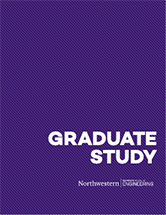People / Students / Class of 2024

Technology and people are two interest areas that I’ve been dedicated to for my entire life to date, and what I’d like to continue learning about and pursuing professionally for the rest of my days. During my tenure as Vice President of MITCHIEF (the MIT-China Innovation and Entrepreneurship Forum), we’ve hosted many business plan contests and incubated multiple U.S. startups in China, bringing over 20 projects to fruition in the Chinese market every year. Such initiatives not only fuel technological innovation, but also penetrate political, economic, and social aspects. It’s within this entrepreneurial ecosystem that I see how technology and innovation can connect and influence people, and there’s so much more I want to accomplish here. This vision has motivated me to apply to your esteemed analytics program at this time, in order to supplement my knowledge and skillsets to facilitate companies’ and countries’ digital transformations on a more widespread and profound level. At Boston University, I majored in math and economics, and through all my quantitative courses, I cultivated strong technical skills by mastering methods like time series analysis, statistical inferences, and optimization models and honing my proficiency in programming languages like Python and R. Through diverse course projects and research studies, I dove deeper into practical problems using a quantitative approach. For instance, I was the only Chinese student in BU's Campus Cultural Inclusion Study. Here I utilized Bayesian analysis and RStudio to model the educational data of Chinese students from 543 universities, including regional education predominance and parental education levels. My report helped colleges and institutions better understand Chinese students from varied cultural origins to better incorporate them into campus life. While still in college, I landed my data analyst position with a leading blockchain technology company, BlockTest, which continued after I graduated and lasted for almost two years. Here my first assignment was helping the company cluster 8,000 blockchain projects for revenue forecasts and risk assessment, which eventually led to the patent #US20190394113. The challenges included several technical issues, such as overlap in project classification, unequal granularity of the standard GICS classification in the blockchain domain, and de-duplicating synonym tags. I utilized several supervised learning algorithms and coded in Python with Sklearn to address these issues. Such exposure greatly honed my technicality. Upon the project completion, I further advocated to the leadership team regarding using blockchains to facilitate social innovations. Specifically in the UN-backed Nigerian vaccine project, by integrating our technology with child medical history modeling, we helped improve third-world databases with millions of records. Though I experienced a steep learning curve throughout this whole journey, I indeed enjoyed expanding the boundary of my comfort zone and becoming more tech-savvy one day after another. While collaborating with engineers to advance new technologies was fascinating, I still wanted to better integrate the people element and make even more impacts. Thus, in 2020, after a business consultant friend mentioned how traditional industries in China are embracing digital transformation, we quickly synchronized and decided to launch a digital transformation consulting company to capture the vast business potential. After extensive market research, we chose the aesthetic beauty industry, where 90% of the Chinese aesthetic medicine clinics supply patients with duplicate or inappropriate products and medical procedures. To address this problem, we first used statistical approaches to categorize clients so that businesses could more precisely propose products to their customers. Specifically, I oversaw a group of machine learning (ML) engineers as they sourced necessary tools using C++ and Python, compiled a database of face images using the meiji3D digital analyzer, and attempted several clustering algorithms for an end-to-end solution. As a result, our institutional users saw a minimum 50% increase in profits. More recently in 2021, another study by-product was born from the methodology used in the aforementioned project. Here we further assisted 12 healthcare facilities in better categorizing their 8,000 to 20,000 patients for targeted advertising.

